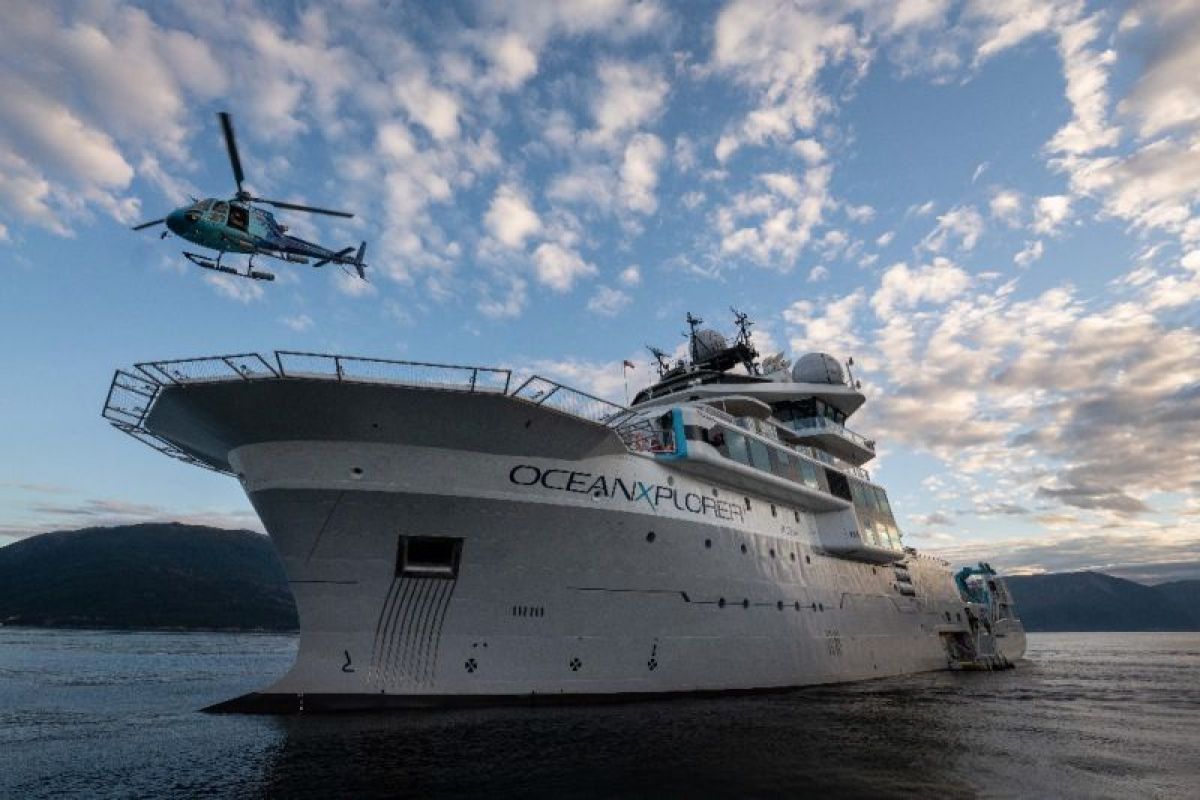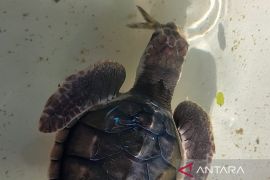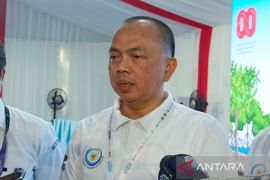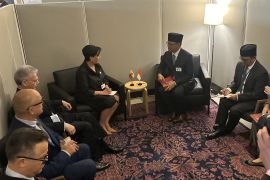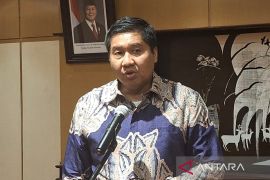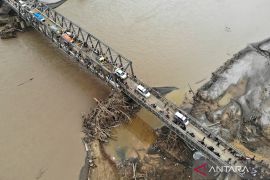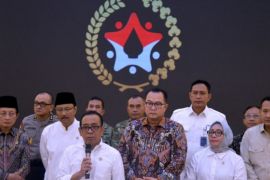However, zero visibility to powerful water pressure becomes quite challenging for conducting exploratory research activities.
Meizani Irmadhiany was momentarily stunned, reminiscing about her visit with the Indonesian government and partners when they entered the OceanX marine research vessel docked in Dubai, the United Arab Emirates, at the end of November 2023.
Two yellow submarines shimmered, reflecting the sunlight. The fresh air before winter mixed with the aquatic scent of the sea.
"When we entered the OceanX ship, there were two submarines that could accommodate two people, with a cruising distance of up to one thousand meters," she stated when met in Jakarta in early May of 2024.
Irmadhiany, as the Senior Vice President and Executive Chair of Konservasi Indonesia, remarked that Indonesia is conducting a three-month research mission with non-profit organization Ocean Xplorer to uncover mysteries under the sea.
The exploration project starts from Sambu Island in Batam and ends in Tomini Bay in North Sulawesi.
Research topic
On May 7, 2024, at 11:00 local time, the anchor of the OceanX ship moored on the seabed of Sambu Island, Batam, slowly began to be pulled upwards. The propeller moved to stir up the seawater, creating white foam and pushing the ship to leave the port.
The expedition kicked off with various questions on the mystery of the deep sea.
A total of 12 Indonesian researchers took part in the mission that began its first route from Batam to Aceh. The number of researchers varies for each shipping route. They come from the National Research and Innovation Agency (BRIN), Indonesian Conservation, and universities.
Marine Ecology Researcher from the Konservasi Indonesia Jimy Kalther highlighted three topics being worked on in the marine research project, with the first being earth sciences or geosciences led directly by BRIN, while the second pertained to research topics on oceanography led by the Bogor Agricultural Institute (IPB), and the third was the exploration of biodiversity and fisheries led by Konservasi Indonesia.
Scientists will map out underwater structures and various biodiversity in an exploration route that will last until the end of August 2024. They will also record which species have economic benefits for humanity.
"We work together with BRIN and universities from the research process, piloting, to processing and analyzing the data obtained from the research,” Kalther remarked.
This deep-sea research expedition is sailing off on five routes, starting from Batam to Aceh along the Malacca Strait, focusing on earth science research to learn about the seabed substrate and underwater structures, especially after the earthquake and tsunami that swept Aceh two decades ago.
The second and third routes are from Aceh to Padang followed by the Padang-Jakarta route. These two routes are the main and longest mission to research the fisheries management area, or WPP 572.
On these routes, researchers will study the aspects of oceanography, earth sciences, biodiversity, and fisheries.
WPP 572 covers the waters of the Indian Ocean on the western part of Sumatra Island and the Sunda Strait. This water area has quite large fisheries resources, especially the pelagic fish group, such as bigeye tuna, skipjack tuna, scallop, mackerel, and yellowfin tuna.
Research on WPP 572, so far, is still relatively small as compared to other fisheries areas on Java and Sulawesi Island. Technological challenges and nature-related factors have hampered the research on WPP 572.
After exploring the Indian Ocean, the expedition will head to Bali and continue to Flores. This route is made specifically for students to introduce them to the research environment from an early age by observing biodiversity and the megafauna, such as whales, sharks, dolphins, and turtles.
On the last route, the entourage will sail from Flores to North Sulawesi to study the coelacanth fish or ancient fish that have been around for hundreds of years in the world. One of their territories is the Sulawesi waters.
Research activities can be an example for humans to uncover the undiscovered deep sea. Although civilizations have existed for thousands of years, we only know five percent of the deepest side of the ocean.
The most advanced research project carried out by humans so far only revolves around space. The deep sea also holds interesting mysteries to be revealed in scientific journals that will become the basis for the development of future civilization.
Collaborative project
Amid the swaying sea currents every seven to nine seconds, the Malacca Straits, separating Sumatra Island and the Malaysian Peninsula, are always bustling with ships exploring the continent.
There is no time to relax and unwind in the middle of the ocean. The days feel long.
Researchers continue to sail to collect various specimens. The OceanX research vessel has four laboratories comprising one wet laboratory unit and three dry laboratory units.
Laboratory facilities at the vessel can be used for DNA sequencing to detect genetic information from samples collected from the sea. In fact, laboratories for geoscience research can also monitor sediment cores.
The Coordinating Ministry for Maritime Affairs and Investment noted that this research focuses on marine biodiversity, carbon potential, fish stock assessment, and earthquake mapping to improve earthquake and tsunami models.
Meanwhile, Head of BRIN Laksana Tri Handoko stated that Indonesia has the longest coastline in the world after Canada. However, deep-sea research in Indonesia is still limited. Hence, collaborative research is important to unveil the deep sea.
"Each expedition includes geoscience researchers and biodiversity researchers," Handoko remarked.
Marine research activities currently underway will become an important foundation for sustainable marine resource management and conservation.
Behind its beauty, the sea has an important role in human life in terms of providing food, medicine, and energy.
Research activities teach humans about the secrets of the sea. One wonders whether it would be possible that in the near future, we could understand the sea in the same way as we understand land. In the end, curiosity will lead humans to uncover this.
Translator: Sugiharto Purnama, Resinta Sulistiyandari
Editor: Aditya Eko Sigit Wicaksono
Copyright © ANTARA 2024
